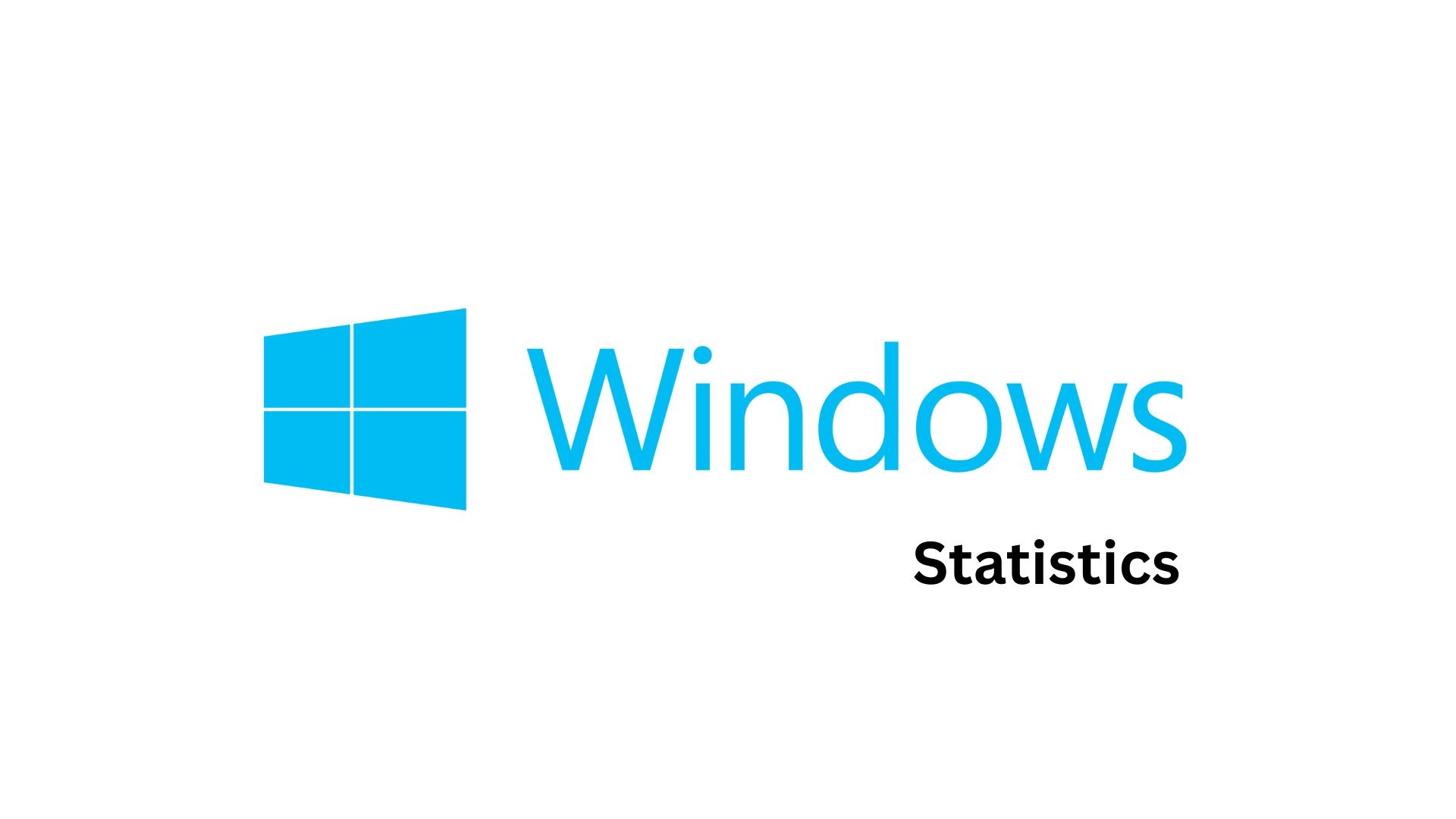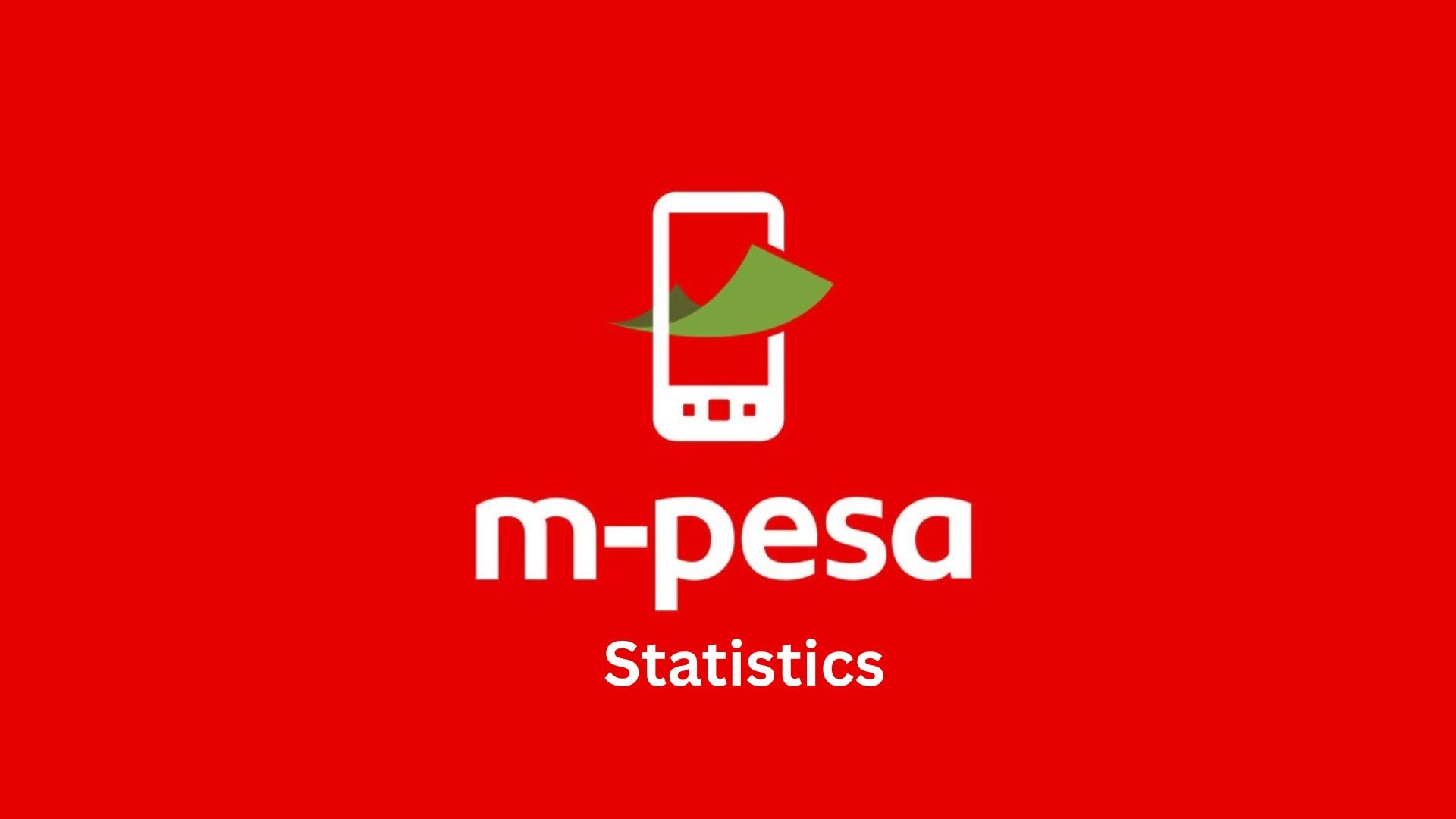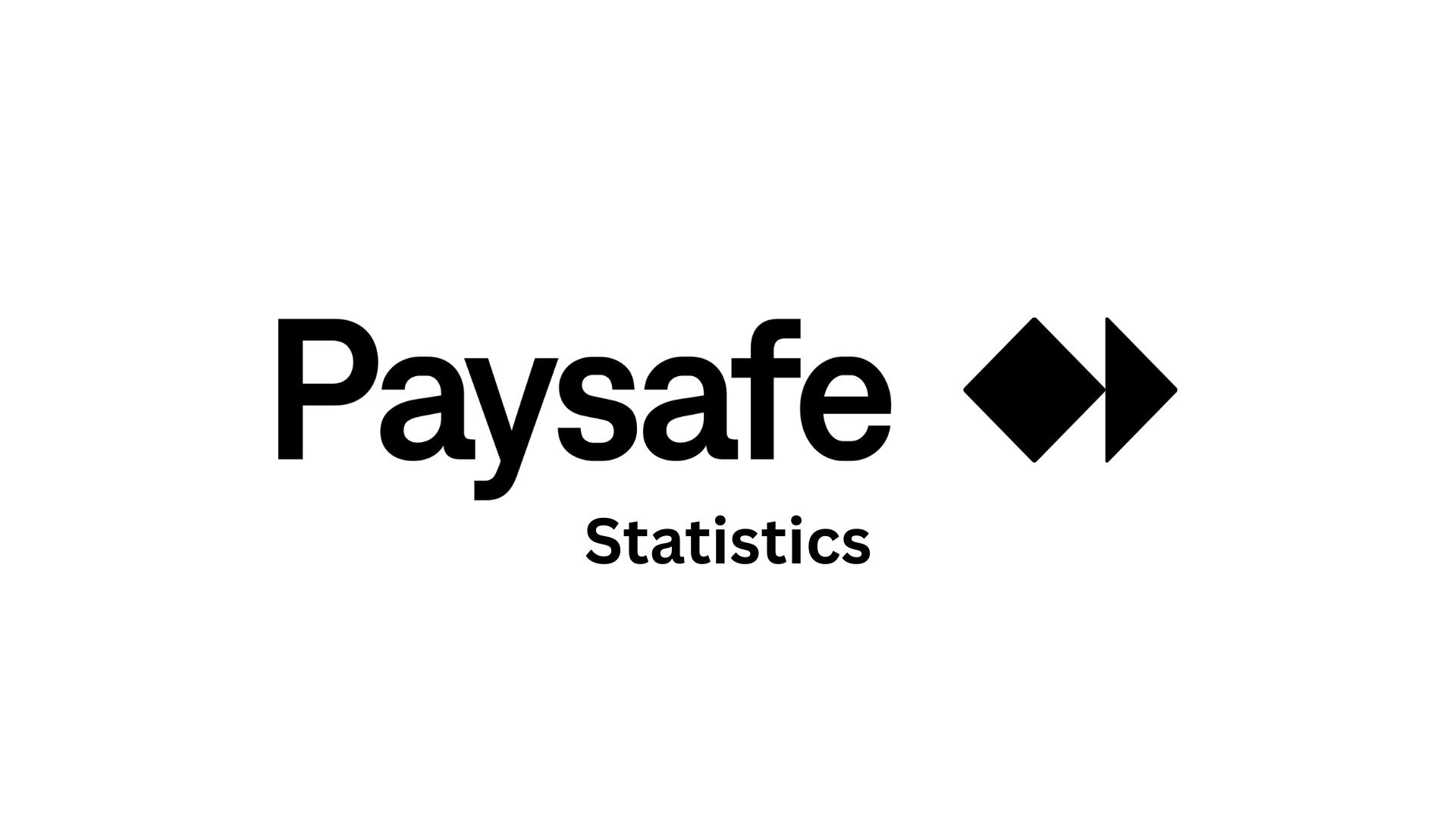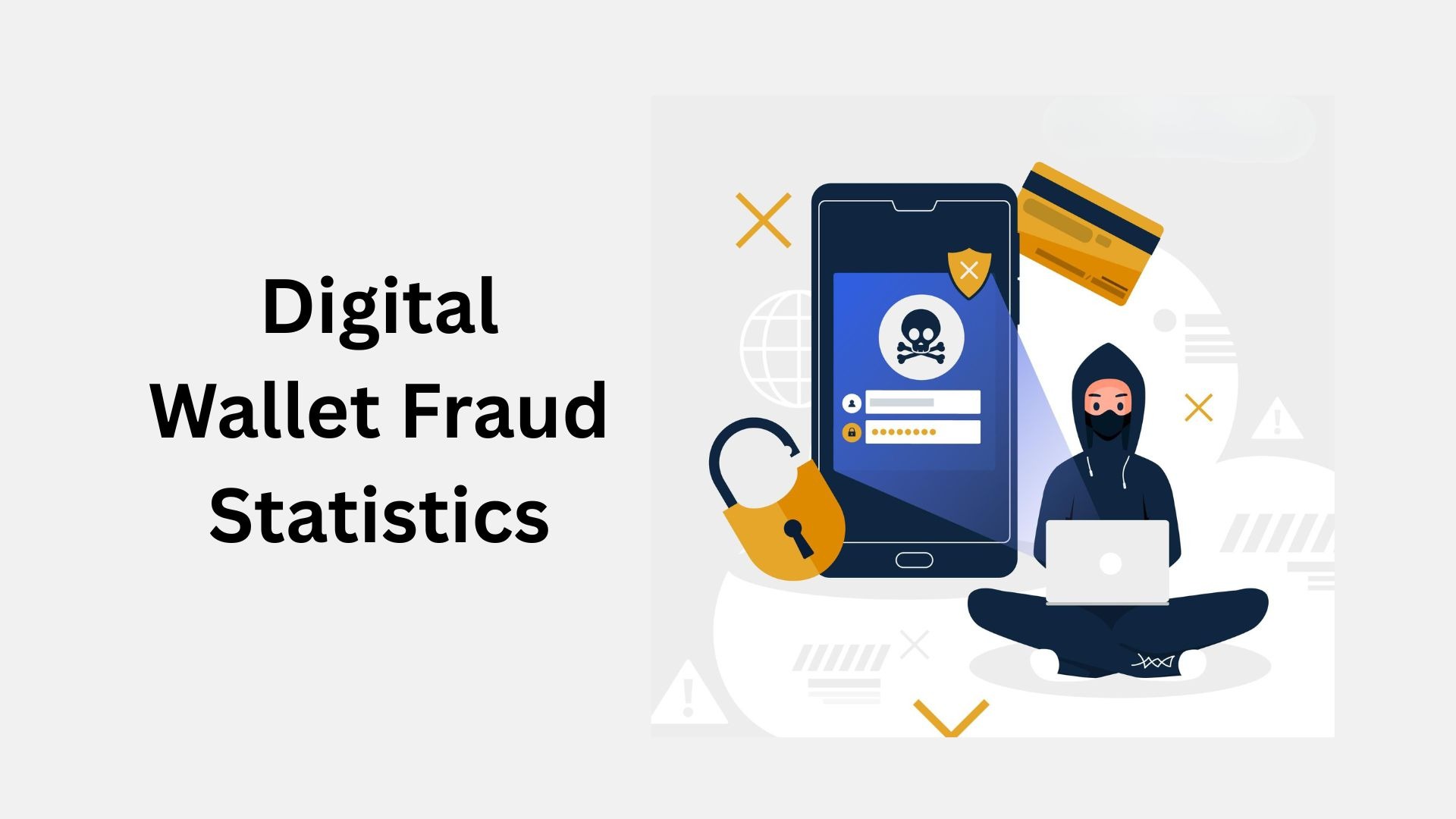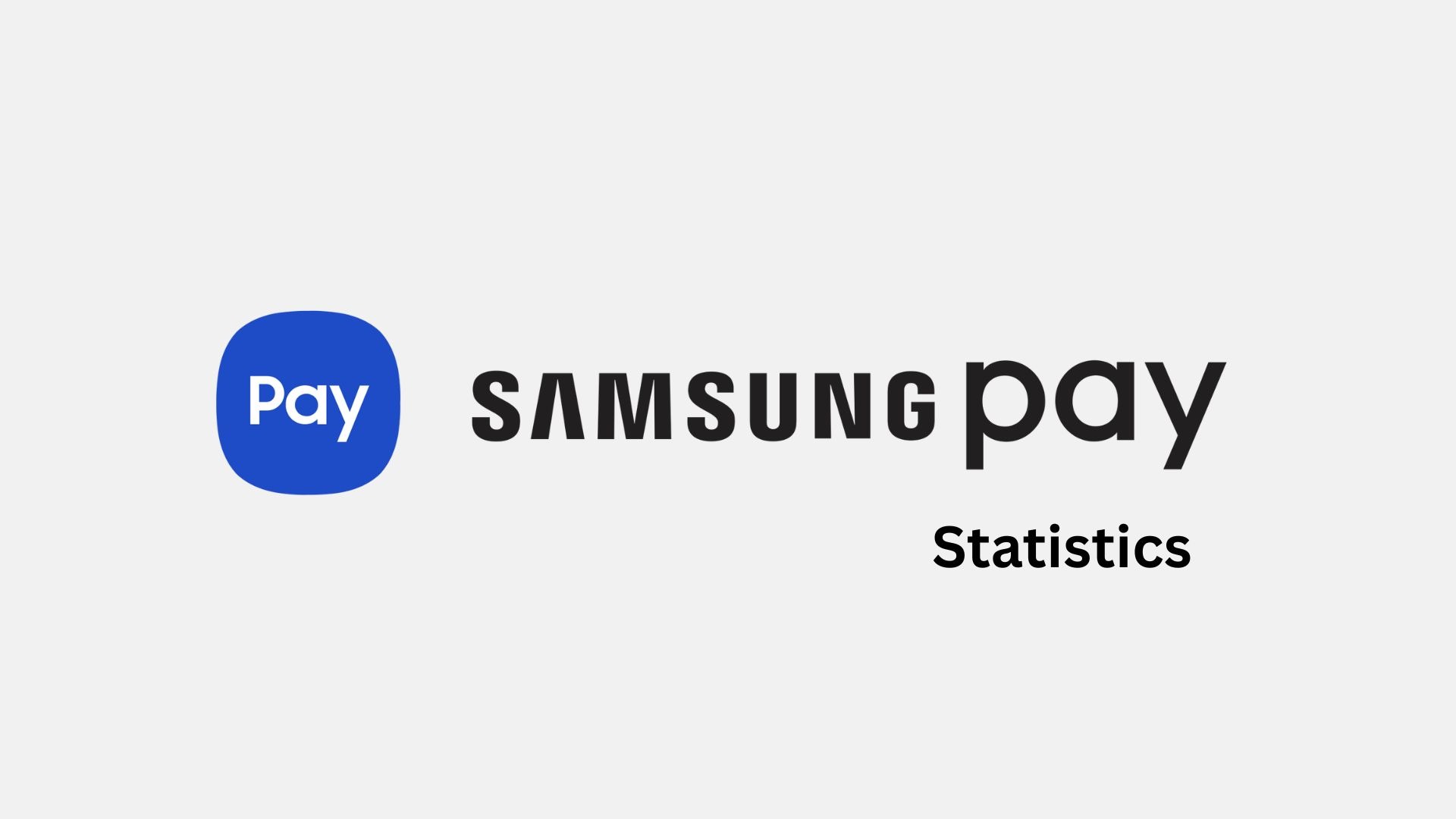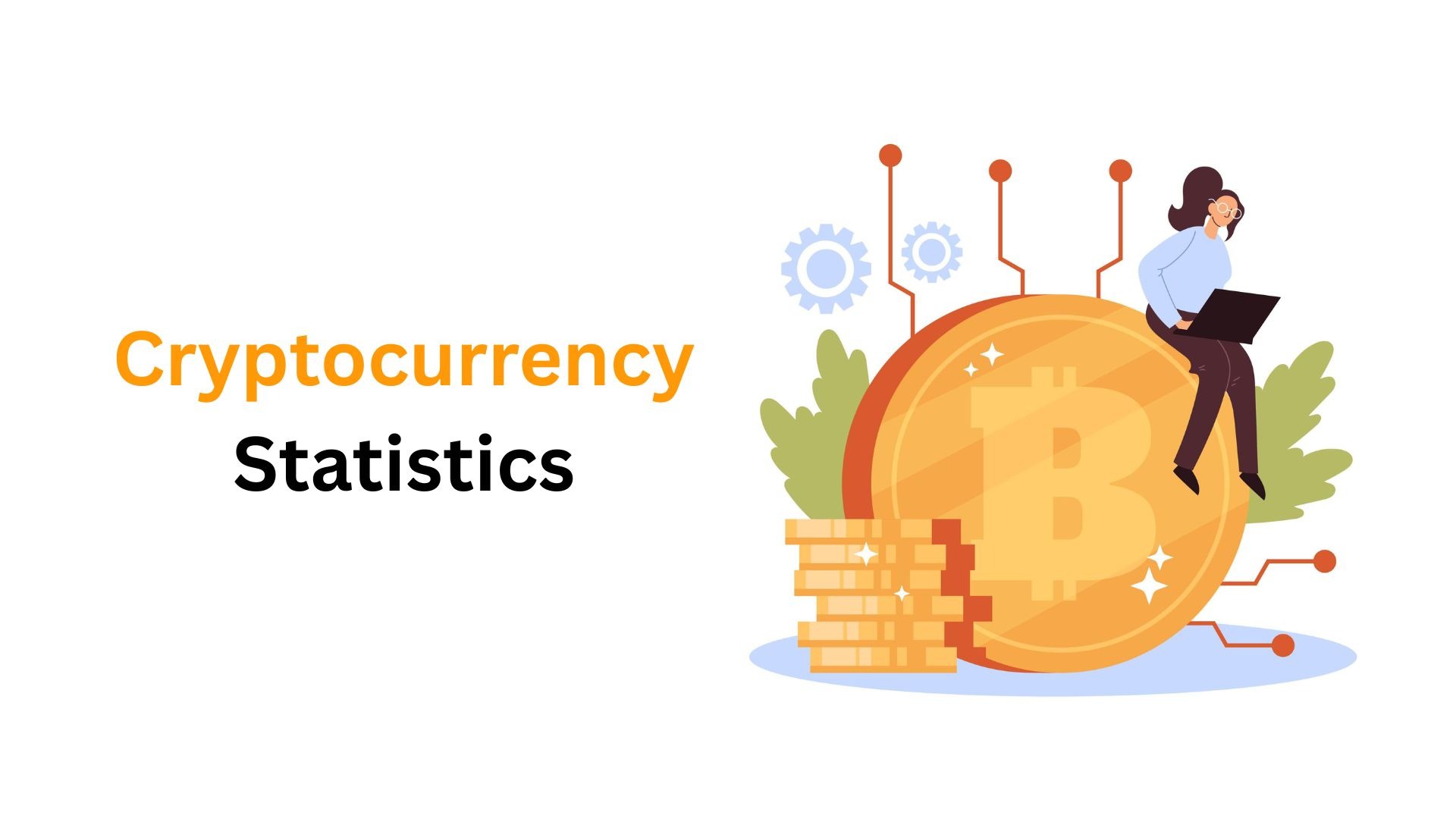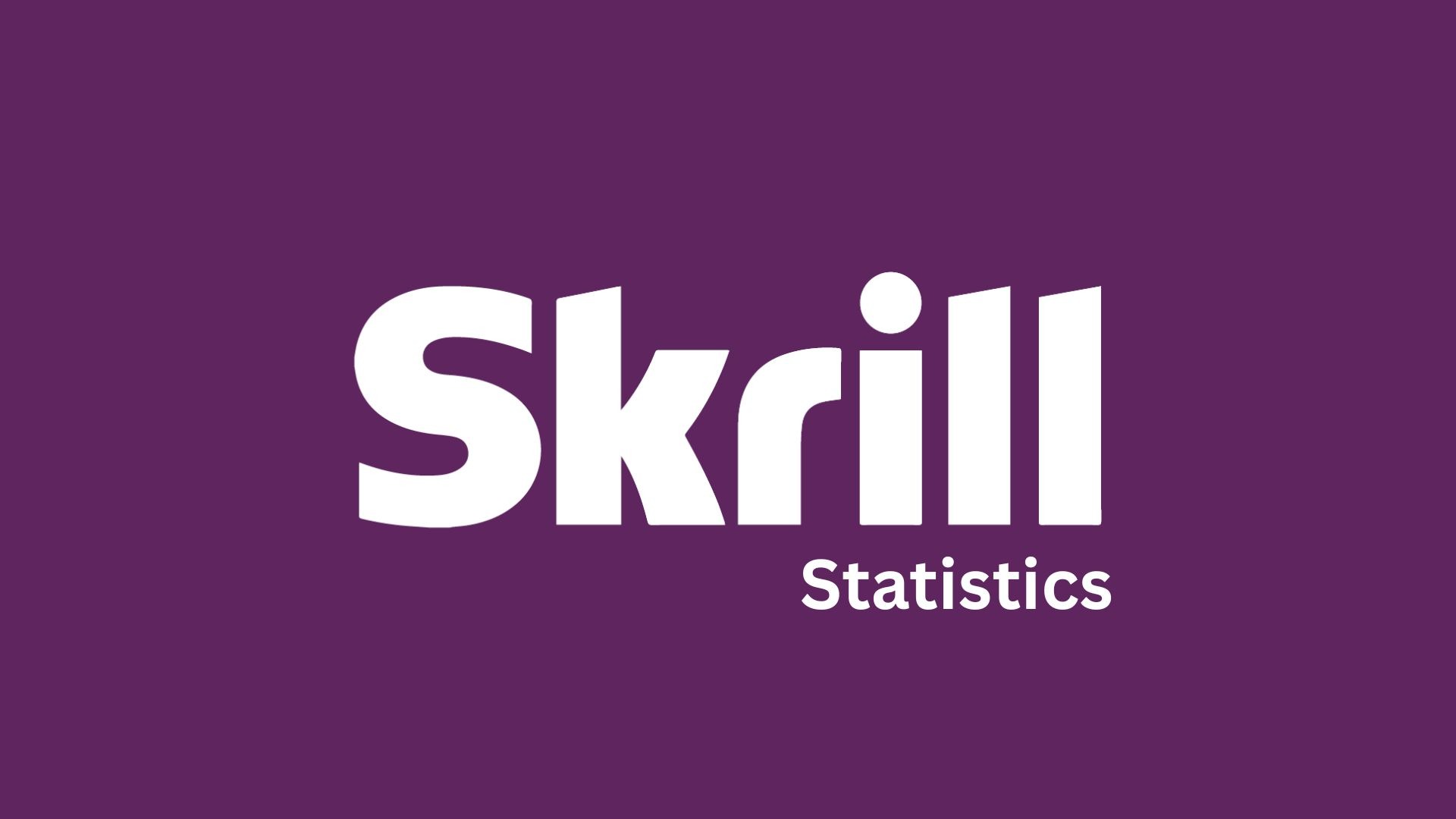Digital Detox Statistics And Facts (2025) : Screen Time, Smartphone Addiction, and Mental Health Trends
Updated · Sep 24, 2025
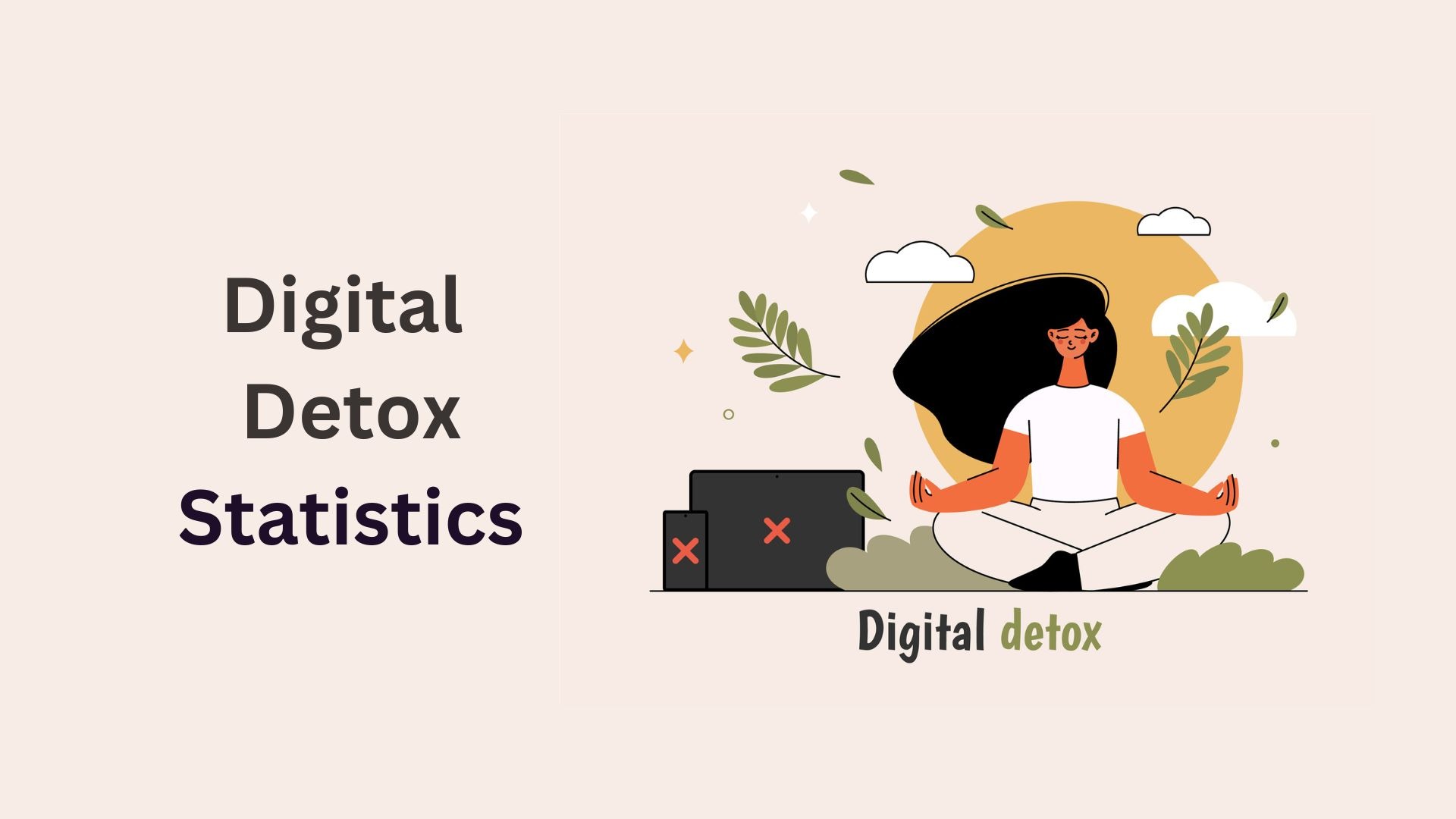
Table of Contents
- Introduction
- Editor’s Choice
- What is A Digital Detox?
- Share of Americans On Digital Detox
- Frequency of Digital Detox In Russia
- Young Smartphone Users In Germany Struggle With Overuse
- Activities To Pursue Digital Detox
- Activities Drew You Back To Using Smartphones
- Rising Global Concerns Over Smartphone And Internet Addiction
- Heavy Digital Technology Use Linked To Wide-Ranging Mental Health Issues
- Rising Interest In Digital Detox Highlights Challenges of Tech Withdrawal
- Most Difficult Devices To Cut From
- Positive Impact of Digital Detox
- Workplace Strategies For Supporting A Digital Detox
- Conclusion
Introduction
Digital Detox Statistics: Digital detox is a deliberate escape from all digital screens — be they phones, social apps, streaming, or even emails — to relax the mind and body. More people were aware of the hazards of screens in 2024 and were trying to cut back on them. At the same time, however, global screen time remained significantly higher, and businesses continued to develop new tools and services that promised to encourage people to unplug.
This article sorts through all the digital detox statistics from surveys, government, academic studies, as well as industry reports to figure out what happened with digital detox in 2024.
Editor’s Choice
- 80% of U.S. smartphone users create their own set of rules to limit screen time, but only 12% actively use the built-in screen time limit features.
- In the year 2024, just a little over 10% of people engaged in a daily digital detox in Russia.
- In Germany, 84% of 18–24-year-olds claim that they use their phones “too much,” while 19% attribute overuse to physical discomfort such as headaches or eye strain.
- Social media is the biggest cause for digital detox: 64% detox from social media, but 51% relapse; gaming and checking work emails get them to relapse at even higher rates than their original reasons.
- Smartphone dependence is again on the rise in recent times; 66% of users in the U.K. suffer from nomophobia, and almost half of Americans consider life without a phone impossible.
- Smartphone tops the list as the hardest device to quit (39.5%), with laptops coming next behind (28.6%), and TVs being the easiest (4.4%).
- Around 23.7% feel less stress and anxiety post-detox, and 20.3% enjoy better social interactions, but these benefits tend to disappear within two to three days.
- Workplace support comes into place in association with leaving devices at the office (17.9%), limiting late-night email access (17%), and encouraging others to partake in yoga or allow tech-free time slots.
What is A Digital Detox?
- A digital detox refers to a particular period during which one’s device use is intentionally minimised or, in some cases, one cuts away from the entire online world.
- Alongside the other 61% who say they are addicted to the Internet and digital screens, one could say that you, too, find yourself staring at that yellow glow of theirs on your mobile from time to time, endlessly scrolling with the hours slipping away unnoticed.
- Being connected to anything does not deposit much into one’s bucket of joy; instead, it drains all energies from his distorted sense.
- Hence, participation in social media-less or screen-time-less is a gain for one’s mental and physical health.
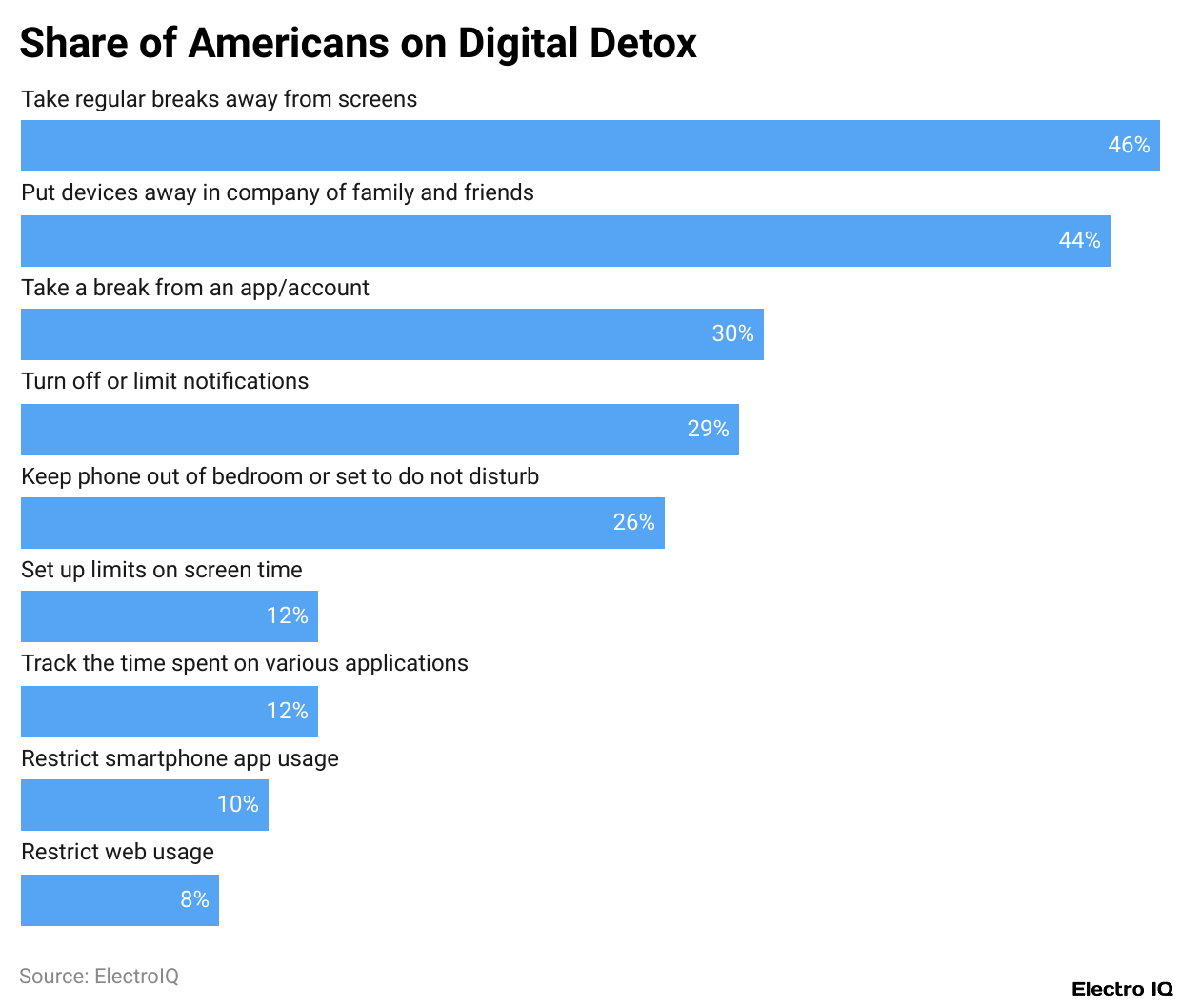
- Smartphones have turned into a centre for modern life as they allow a person to do almost anything – talk to their loved ones, have entertainment, pay a bill, or work remotely.
- However, this omnipresent presence has also opened up discussions about just how much time one gives to their phones.
- Deloitte’s 2023 Consumer Connected study on digital detox statistics reveals that youngsters, especially those from 18 to 40, are most bothered by how phone life affects them.
- Over half of the respondents say they feel that the screen time is not set comfortably, also laden with concerns about the implications for their physical health, and possibly that of their emotions.
- On the other hand, individuals in the age bracket 41 and above show less concern, possibly because their use of the device might be less intense.
- To create greater equilibrium between online and offline life, users have been trying to enforce some boundaries.
- About 80% of smartphone users in the U.S. have at least one boundary in place, such as regular screen breaks or outrightly putting the devices away during family or friend time.
- Interestingly, only 12% have used the built-in screen time limit features on modern smartphones, despite them being designed precisely for such a purpose.
Frequency of Digital Detox In Russia
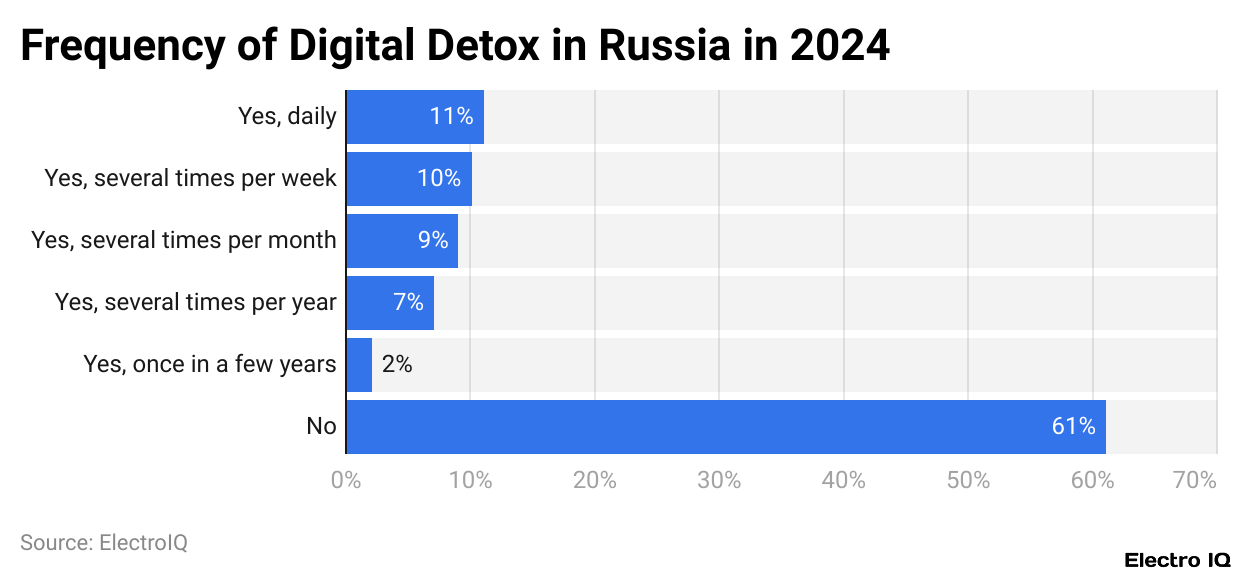
(Reference: statista.com)
- Another survey carried out in Russia in May-June 2024, however, found that the vast majority of people had not participated in any of the digital detox activities.
- Just over 10% of respondents admitted to having refrained from using their gadgets and the Internet during some determined period throughout the day.
Young Smartphone Users In Germany Struggle With Overuse
- According to a May 2024 survey on digital detox statistics of 2000 consumers in Germany, about 84% of phone users between the age group of 18-24 feel overburdened; another 55% of users younger than 45 feel that they are now spending more time on devices within the span of a year.
- 50% the people are feeling these symptoms due to overuse.
- 56% reported keeping late hours, getting distracted, or having to compulsively check their phones; out of these.
- 19% of younger respondents went to the extent of associating the usage with physical discomfort, such as headaches or eye strain, from using their phones.
- They try to avert it via muting or blocking notifications or conflicts, or even turning off their gadgets.
- This trend might spur more self-regulation in the industry while equally giving opportunities to app developers and platform providers to rise above by offering more intentional and higher-value screen time.
Activities To Pursue Digital Detox
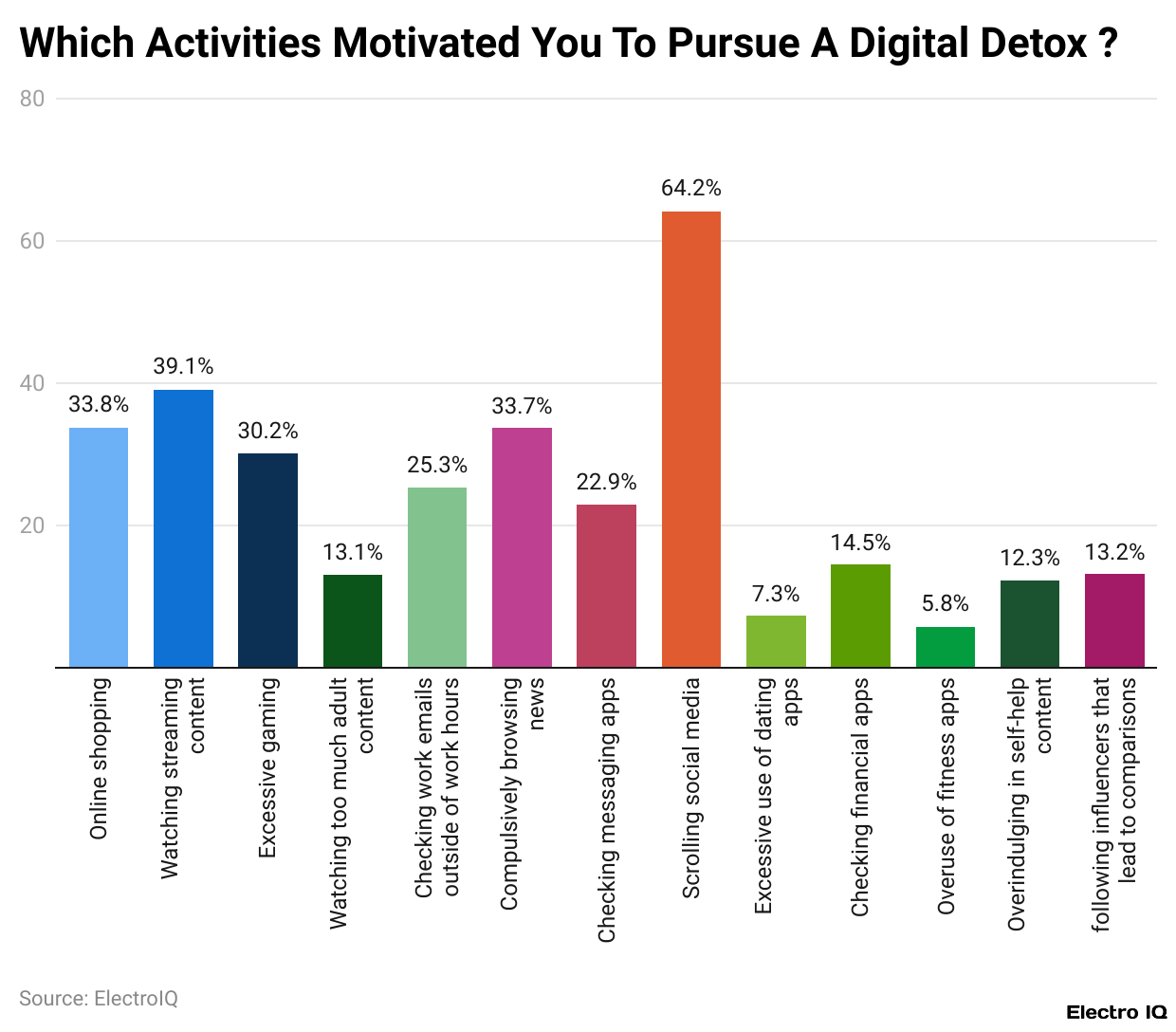
(Reference: online-solitaire.com)
- 64% of people take breaks from social media for their digital detox, yet 51% return to it; social media in this way stands as both the prime motive for their detox and the biggest challenge they face in abstaining.
- This is particularly important when we consider that around half of all teens say they feel addicted to their phones, mostly in the context of social media.
- Other reasons people go on detoxes are due to overspending (39%) and online shopping (34%).
- This can mean that in the full context of the overload, it is not just social media but all areas of life-whether entertainment, shopping, or working-that are at the core of the problem.
- One participant described it as feeling like “phones can be their sense of jail”; ongoing online engagements can instil in them/a sentiment of being trapped.
Activities Drew You Back To Using Smartphones
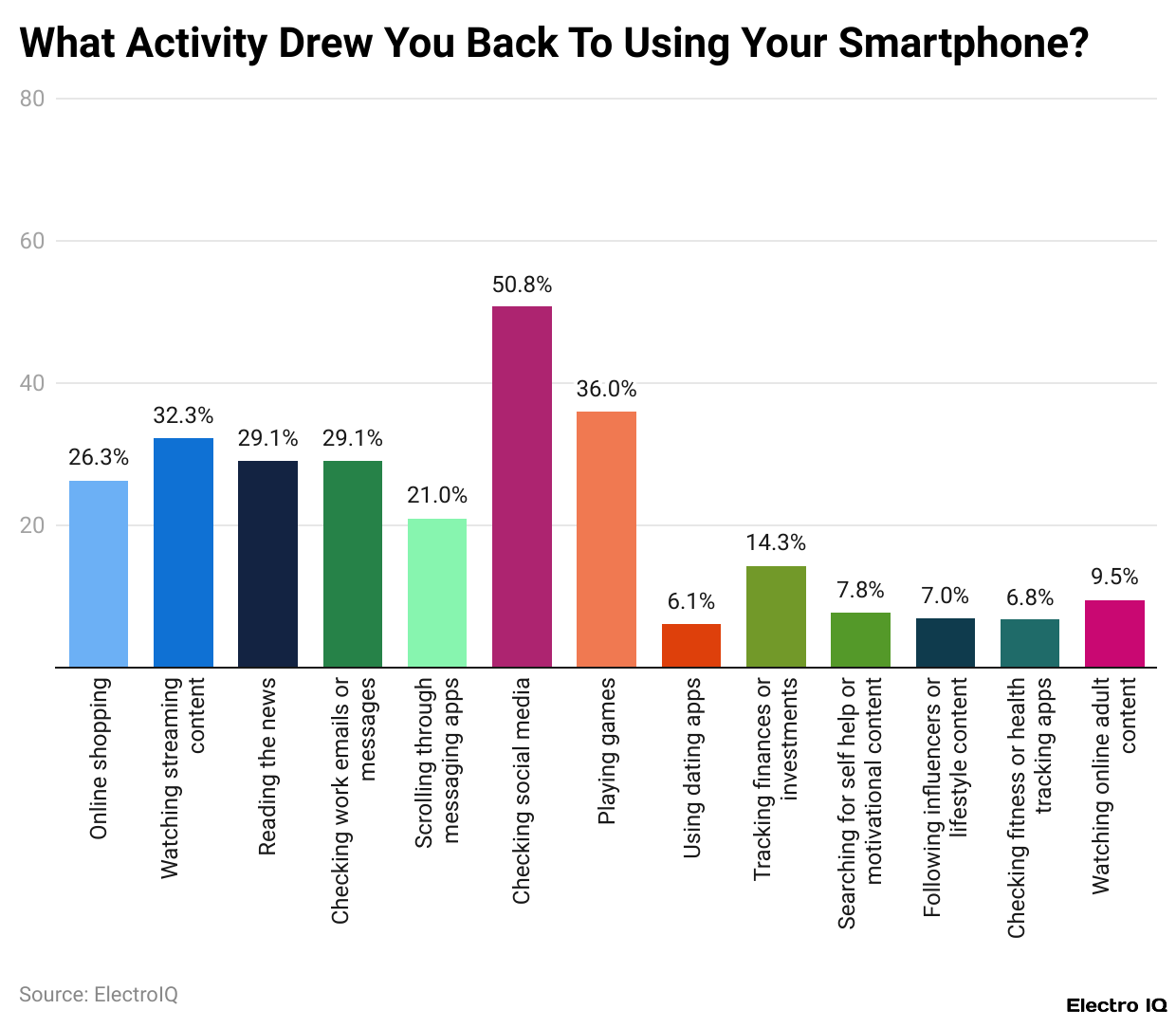
(Reference: online-solitaire.com)
- Online Solitaire Data on digital detox statistics show that in many instances, a person returns to the very activity that was at the centre of preventing them during a digital detox.
- From those who take social media dates, 64% report taking it on, but 51% go back.
- For streaming content, shopping online, and checking news, the patterns are similar: 39% vs. 32%, 34% vs. 26%, and 34% vs. 29%, respectively.
- Most activities bear lower relapse rates for the corresponding initial reasons than gaming (30% vs. 36%) and work emails (25% vs. 29%), which instead see higher relapse rates.
- Gaming could be harder to resist because it is very addictive, while the other reason-for-work emails-might be very difficult to avoid because the job demands it.
Rising Global Concerns Over Smartphone And Internet Addiction
- The escalating reliance on smartphones and the internet all around the world. There are now more than three billion smartphone users, and the count shall continue to increase.
- Inhabitants do check social media very often; 34% had looked at Facebook in the last ten minutes, so phone use theoretically may start right there.
- The young population particularly faces this: upon waking up, they take poisons into their own hands.
- In just this way, one out of three smartphone owners has these fears, while over half express concern regarding their time spent on the device, and almost half admit that they are online too much in the UK.
- The specified treatment concerns had spawned treatment centres: the first inpatient centre for internet addiction in the U.S. was inaugurated in 2013. Later, China went on to set up more than 300 boot camps for teenagers.
- Research has out that women seem to be more vulnerable to smartphone addiction, and just the sight of a Facebook logo can induce a craving.
- Other research has uncovered parental double standards about tech use, while close to half of Americans say they cannot live without their mobile phones.
Heavy Digital Technology Use Linked To Wide-Ranging Mental Health Issues
- The multiple studies show a strong link between screen overuse, especially in social media, gaming, and smartphone activity, and a variety of mental health problems.
- Running in parallel with heavy internet use are higher depression rates, anxiety, low self-esteem, social isolation, and even the presence of addiction symptoms.
- While some active online engagement, like sending messages, can enhance social support and reduce loneliness, passive scrolling damages these parameters.
- Some of the key findings are that young people and endless checkers become highly stressed, many feel less confident about their looks or life, and the more they use a combination of several social media sites, the more depressive symptoms they report.
- Narcissism and neuroticism that could bear a compulsive aspect are some of the personality traits that are related to smartphone addiction, which is a pathology similar to gambling.
- Gaming addiction has been classified as a mental disorder by the WHO.
- It has been found that a social media hiatus of a week can augment one’s happiness, though on the other hand, the abuse of phones and social apps has been linked to mood depression, insomnia, and an increased level of anxiety and depression.
Rising Interest In Digital Detox Highlights Challenges of Tech Withdrawal
- With growing awareness of smartphone addiction, several people are trying to rebalance their lives with technology.
- As per Keywords Everywhere, search numbers for digital detox in the year 2024 have more than tripled compared to 2023, having an average of 1,100 monthly searches.
- Typically, a digital detox entails a person walking away from social media and smartphone use to alleviate stress and strengthen their mental well-being.
- The critical side of digital detox is that it can be an uphill task in a techno-dependent world.
- As per Rehabs UK on digital detox statistics, social media withdrawal feels much like withdrawal from any other drug, usually bringing with it feelings of irritability, mood swings, frustrations, boredom, and decreased levels of inspiration.
- Lester Morse, the founder, says the best way to get over these feelings would be to avoid replacing the time with other unhealthy habits, focusing instead on positive, meaningful activities that help them fade away with time.
Most Difficult Devices To Cut From

(Source: passport-photo.online)
- This survey is proof that the smartphone is the hardest device for many to part with; 39.5% said they would have the hardest time giving up smartphones.
- The reasoning behind the fact is not hard to deduce, because a smartphone is, in essence, a mini-computer combining communication, entertainment, work tools, and social media.
- Laptops come second in the ranking, with a share of 28.6%, presumably for work, study, and all other potential online activities.
- Gaming consoles are the hardest gadgets to give away for about 11.2% of people, which speaks to how closely many link gaming with leisure.
- Tablet and smartwatch come in a tie for third place, harder for 6.5% of respondents, as perhaps they offer convenience, entertainment, and fitness tracking.
- At 4.4% in the last place are TVs-that may mean that, while TV remains a source of entertainment, it may be easier for people to disengage from it when compared to more interactive and multifunctional gadgets.
Positive Impact of Digital Detox
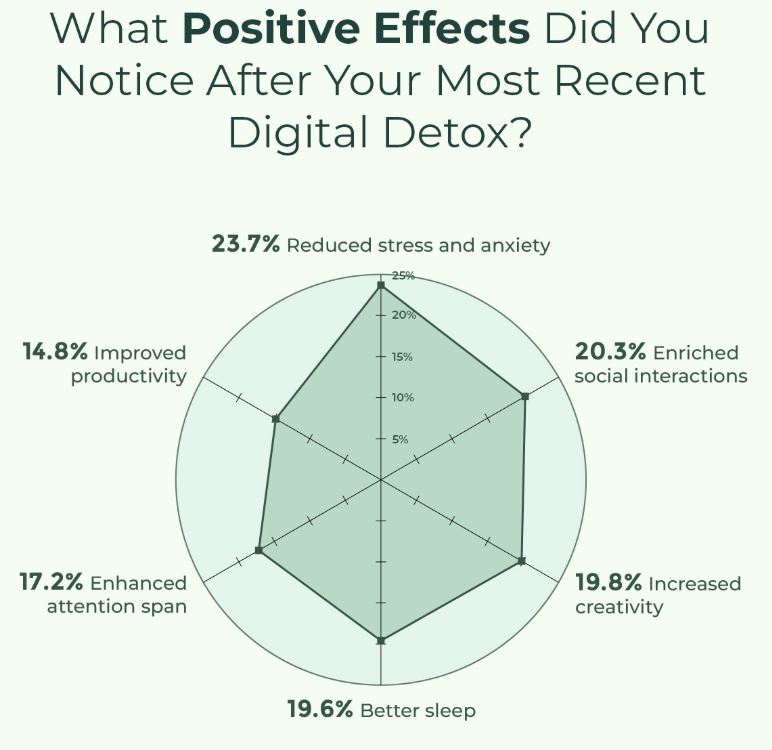
(Source: passport-photo.online)
- Unplugging from modern technology, of course, can be difficult, but potentially rewarding.
- The survey results indicate that many participants found their digital detox vis-à-vis actual beneficial, 23.7% were able to ease stress and anxiety after the last digital detox, and 20.3% also witnessed better quality of social interactions.
- This would imply that even short breaks from screens can do well for mental health and improve personal relationships.
- 43% of respondents stated that these effects generally last for only two to three days before wearing off.
- Keeping these benefits short-term means one-time detox sessions are not enough for any lasting change.
- Therefore, these detoxes should be made into daily routines or made smaller so the effect of the detox stays there for a longer time, enabling better mood, lower stress, and socialisation, all as part of healthy and balanced living.
Workplace Strategies For Supporting A Digital Detox
- Data shows ways in which companies facilitate the disconnecting of their workforce from technology and managing screen time.
- The most common way, according to 17.9% of organisations, is to promote a rule where staff members leave their work devices, including laptops, in the office at the close of business.
- Only slightly behind, another 17% restrict the accessibility to work emails and team chat apps so as to reduce pressure to communicate outside of office hours.
- Almost 16.2% encourage turning off notifications, whereas about 15.9% promote things like yoga to get away from the screens for a little.
- About 15.7% support one-screen limits, scheduled screen breaks, and windows of tech-free time.
- 12.2% of companies blocked social media, while 9.9% made it a rule to have meetings sans laptops to maintain focus on distraction-free discussions.
- These strategies, therefore, show a rising acknowledgement that productivity has to be balanced with digital well-being.
Conclusion
The 2024 digital detox landscape paints a picture of the growing global consciousness of the psychological and physiological adverse effects of screen time. While 60% and upwards admit to digital addiction and thus attempt to put limits on their lives, a big part of the population relapses into that addiction, most prominently in the areas of social media, gaming, and work email.
Short-term benefits are garnered from detoxing, such as reduced stress and increased social interaction, but these gratifications are typically fleeting, dropping off days after the crisis stage of detoxification. The devices considered the most difficult to let go of—smartphones and laptops—offer the strongest evidence toward demonstrating that technology occupies a central space in the map of everyone’s life.
FAQ.
A digital detox involves allocating specific time during which one cuts down or completely avoids the use of digital gadgets like smartphones, social media, online streaming, or emails. Such detoxes are deemed important because of the excessive nature of screen use being associated with mental issues such as anxiety, depression, insomnia, or low self-esteem, whereas even short breaks from screens can build up a little stress relief and some social bonding.
The awareness is growing; participation, however, varies. In the United States, 80% of smartphone users acknowledge setting personal boundaries, yet only 12% actually use the built-in screen time feature. Just over 10% practised a daily detox in Russia, and in Germany, over 84% of 18–24-year-olds admit to excessively using their phones.
From a detox perspective, social media proves to be the hardest, with 64% of users going on a digital media detox and 51% relapsing. Entertaining in nature, gaming tops social media and overtakes work emails with its relapse rates being greater than its initial detox rates. Both entertainment and work demands make disconnection hard.
Smartphones come at the top with 39.5%, followed by laptops and 28.6%. Gaming consoles (11.2%), tablets (6.5%), and smartwatches (6.5%) are also not that easy, while widescreens are the easiest to give up at just 4.4%.
In the polls that took place shortly after the second detox, 23.7% said they experienced less stress and anxiety, while 20.3% took delight in better social interaction. These benefits, however, are said to fade within two or three days by 43%, hinting at the necessity of having regular or much smaller detoxes to retain the effect.

I hold an MBA in Finance and Marketing, bringing a unique blend of business acumen and creative communication skills. With experience as a content in crafting statistical and research-backed content across multiple domains, including education, technology, product reviews, and company website analytics, I specialize in producing engaging, informative, and SEO-optimized content tailored to diverse audiences. My work bridges technical accuracy with compelling storytelling, helping brands educate, inform, and connect with their target markets.
